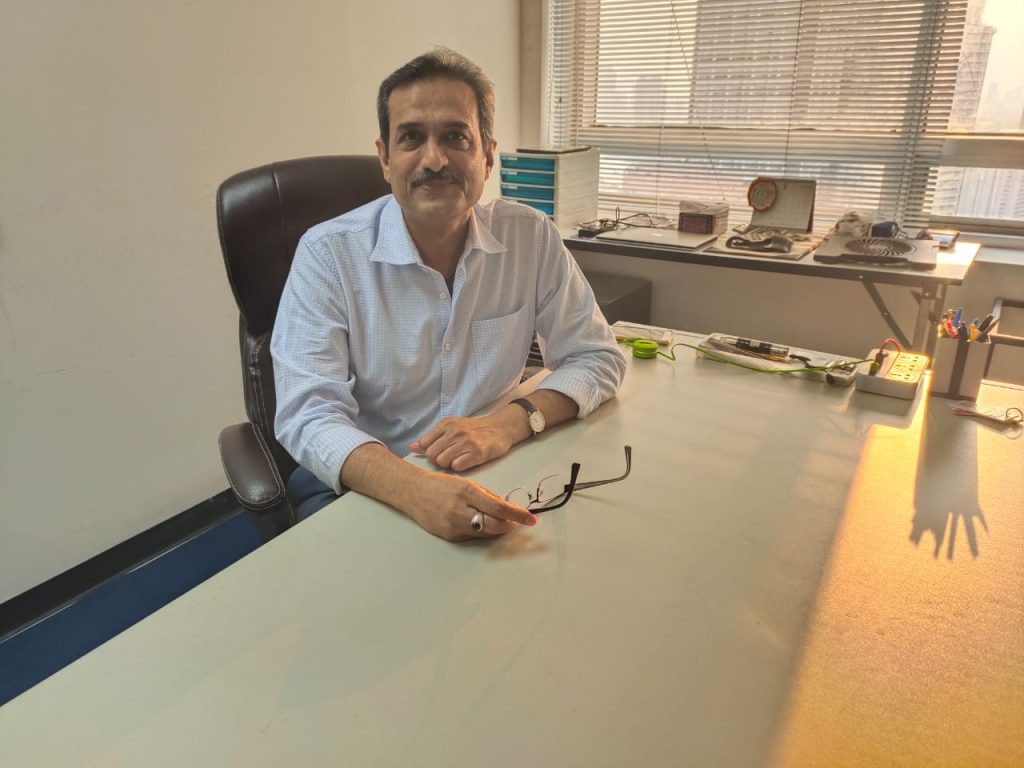
Jayesh Patel, a well known figure in the world of Gemology, is an experienced trader and a teacher. Born in Burma, lived in India and settled in Thailand he has seen all the action which took place in gem trade from past 3-4 decades. From mining to cutting to dealing in rough and faceted stones, he is well aware of all the intricacies of the gem trade. Considered as an authority on Rubies and Sapphires, we meet him to learn about his journey and his take on the gem business
Hello sir, Welcome to the interview session of Littlegemologist
1.We would like to know about you. How did your journey start?
Ans. Well, I was born in Mogok(Burma). My parents and were already involved in gem trading business and were dealing in Rubies and Sapphires. Spinel in those days was not a popular stone, so they never bought any Spinels in Burma.
My grandfather was there for 35 years and he never bought a single Spinel. In fact, in those days if you buy rough Rubies in large quantity a small parcel of Spinel rough was given free as a good luck. With this background I was exposed to Burmese gemstones since early childhood.
2. How did you decide to join gem business and land up in Bangkok?
Ans. I started when I was around 16 or 17 years old. My father passed away when I was studying in college in Bombay. I had 2 uncles who were already in the joint family business. One of my uncle was in Bangkok, other was in our hometown in India, a place called Khambhat in Gujarat. He was looking after cutting factory and my father was handling sales in Bombay. I quit college and was sent to my hometown Khambhat in Gujarat to learn gem cutting for the next one year under the watchful guidance of my grandfather.
Those days it was necessary to learn gem cutting if you wanted to get into gem business. This was the case with every family who were in gem business.
Next, my uncle brought me to Bangkok. I used to buy rough gemstones in Bangkok for our cutting factories back in India. Later on, got married and settled here in Bangkok. My both children grew up here. Bangkok is our home now.
I was introduced to Gemology by Henry Ho, chairman and founder of AIGS(Asian Institute of Gemological Sciences), who knew me and my uncle very well. He wanted me to teach gemology at AIGS so that students could benefit from my knowledge and experience in the gem business. He offered me a free course to study. And soon I started teaching at AIGS. I believe I should have studied gemology much earlier in my life. I have to admit that gemology course not only taught me the technical, academic and the scientific side of the gemstones but it also introduced me to Spinel. Before that, I never knew that Spinel can be so beautiful and still be so inexpensive despite its beauty and rarity. On my next trip to Mogok(Burma) for the first time I bought a very nice 2 carat size lot of cut Spinel’s for only 80 USD per carat in 2002. This is a dream in the present day market situation.
3. Do you think if a person learns cutting prior to getting into the gem trade,he has an edge over others?
Ans. Yes of course, definitely. I am not saying you have to become a professional gem cutter but if you have basic cutting experience it will help you to look at the rough, evaluate the shape, colour and also estimate the yield you will be getting after the rough is cut into a polished stone.
4. What you like to deal with? Is it rough or faceted stones?
Ans. My starting was with rough stones. Nowadays it’s more of cut stones. You don’t get to see good quality rough being traded openly as they are already cut at their source as the native people already know their worth after the cut. Why will a dealer sell you a nice quality rough ruby for 30-40000 US dollars when he knows he can get it cut and profit much more.
5. Why is dealing in rough considered risky?
Ans. It’s difficult if you don’t know the cutting aspects. If you don’t know how much yield you will be getting out of the rough, then it will be a gamble not a gem trading. It is also difficult to estimate colour and clarity of the rough stones because many a times they are not as transparent as a cut stone.
6. Why don’t we see more institutes teaching identification of rough?
Ans. Only, IGT(Bangkok)* has a course on
*(Rough grading course at IGT, Bangkok, is taught by Jayesh Patel)
7. Do you think good trader can be a good teacher and vice-versa?
Ans. Yes, good trader can be a good teacher,but not necessarily the other way around. You gain knowledge and expertise in the field and in the market. Then you can pass on this knowledge to others which is incidentally my strong point as a teacher.
8. You have been in this business for more than 3 decades? What you think is the future if the gem trading?
Ans. There is more competition now in this trade. Since this business caters to luxury segment, profits are good and I believe the future is ok. The only worrying thing is that colour stone market does not have an organized structure like diamond industry. Most of the gemstone mining is unorganized, from Colombian emeralds to Mogok rubies. Until we have proper systems in place, mining of gemstones will remain unorganized. For last few years Gemfields has introduced much better organized mining to source and auction Emerald and rough Ruby from Zambia and Mozambique. From mine to market.
9. As far as colour grading is concerned, labs they use words like Muzo green, Peacock blue, Pigeon blood red. Don’t you think these tactics artificially increase the prices of gem stones?
Ans. Well, it’s a debatable issue and yes prices do get inflated by the use of these words.Personally I’m against using these nomenclatures by the labs. Originally pigeon’s blood name came from Burma for its top quality rubies.
But nowadays many rubies have pigeon blood stated in the report even though they are neither from Burma nor anywhere close to top quality Burma ruby.
I would still prefer words like vivid blue, vivid red, intense blue and so on. Labs are in the business of making money and the dealers demand assistance which labs comply with. Today, Labs have been leaning more in
Look, lab reports are only identification reports not grading reports like diamonds. GIA diamond report is a grading report where you have a well defined structure of
10. How long do you think stones from Burma would keep coming in the market?
Ans. It will keep coming. There are lots of stones in Mogok, Burma, but the problem is unorganized mining. Private licenses are given to small traders. The Stones are still there and with proper machines, proper set up along with scientific equipment you can get more number of stones from Burma. I believe it’s again the mining issue, if done in an organized way Burma will continue to supply lot of stones to the market.
11. What you think about the
12. Do you think big labs should come together and form some kind of an association?
13. In 2018 we saw Ethiopian emeralds come in the markets. What is your take
In Ethiopia there was a very small pocket where emeralds were mined and that more or less is over now. Ethiopian emeralds were expensive as well. After few
14. What about Greenland rubies?
Ans. I have seen Greenland rubies. I have seen them being heated in Chantaburi. Most of what I saw were fit for cabochons and beads quality grade, very few high grade. The owners are promoting these rubies with a very aggressive marketing strategy.
15. What you think of rubies from Madagascar?
16. We do not see many gem schools being run? What you think is the reason for that?
17. What you think about the outlook of gem and jewellery business?
Ans. Unfortunately, the business has become totally dependent on gem reports like diamonds. Everyone wants a certificate. They are not interested in what a gemologist or experienced trader has to say. With the advent of Chinese buyers in recent times in the market the importance and dependence on the reports increased many folds. Many of those people were sold gemstones by traders who had certificates from unprofessional labs.
It is sad that my professional knowledge as a gem trader and a gemologist becomes irrelevant because the customer is happy with a particular gem lab report. The paper has made professional knowledge and years of experience invalid.
18.What is your advice to gemology students?
19. What is your advi
Thank you, Sir, thank you for providing us with your valuable insights on everything related to gemstones. Littlegemologist wishes you all the best for your future endeavours.






2 Comments
I am a Geologist by profession. Recently i have developed an interest in Gemstones as a hobby . I want to study on line and have acquired done equipment too but i also want to undertake some real practical knowledge in thiscfield. Is it possible to get this practical knowledge from AIGS , Bangkok.
Akso does your institute offer some on line courses please.
Will appreciate your respise.
Thank you
Deepak
hello mr. deepak
thanks for writing to me. its good to know that you want to study gemology.
please check your email. I have sent you a message.